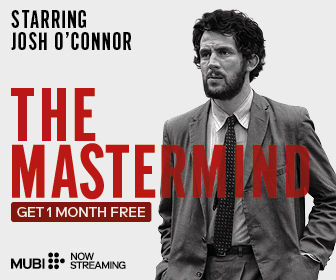Choosing strong English movies can grow more than just listening and pronunciation. A simple movie night can turn a dorm into a small writing studio. When students track clear plots, study natural dialogue, and jot quick notes, they gather fresh words and flexible sentence patterns for later drafts. From the first frame, a film presents an easy structure that mirrors sound paragraphs. Beginning, middle, and end line up like a clean outline for essays. A calm Friday screening can even spark Monday’s plan and thesis. For anyone still nervous about shaping ideas on paper, term paper assistance from Essay Market can add steady guidance that matches the effort poured into film-based study. This guide shows how cinema, especially educational movies and other story gems, can strengthen writing muscles in practical ways. It also reviews top English movies that encourage reflection, analysis, and creative phrasing. Bring snacks, a notebook, and an open mind, and get ready to write with purpose.
Why Movies Boost Writing Skills
A feature film engages eyes, ears, and emotions at the same time. That mix helps the new language stick well beyond the closing credits. A textbook example may present one lonely sentence without tone or gesture. A full scene blends voice, posture, timing, and word choice to create meaning. That richer context helps learners recall useful phrases during actual drafting. Films also model story shapes that teachers repeat across many classes. Exposition, rising action, climax, and resolution appear in scenes you can map. By linking moments to these checkpoints, students internalize arcs they can reuse in essays and tales. Pacing adds more value. Directors leave natural pauses for humor, tension, and quiet thought. Those spaces invite quick predictions that turn into outlines before writing begins. In short, film English works like a live workshop where professional screenwriters demonstrate style, register, and rhythm at full speed.
Picking the Right Education Movies
Not every blockbuster suits language practice or clear writing tasks. The best English movies for student writers share several steady traits. First, they feature clear, articulate speech delivered at a moderate pace. That allows learners to catch nuance without constant rewinding. Second, the plots revolve around relatable themes such as growing up, school pressure, friendship, or self-discovery. These topics naturally spark short reflections and longer responses after viewing. That is why many movies about education, mentoring, or college life fit classroom needs so well. They supply ready material for opinion pieces and personal narratives. Third, think about access. Subtitles, official scripts, and transcript files should be easy to find, so tricky lines can be checked quickly. Runtime matters too. Ninety to one hundred twenty minutes balances depth and focus for most groups. Finally, favor ratings at PG-13 or below so content stays classroom-friendly and vocabulary remains broadly helpful. Those simple checks turn entertainment time into a productive writing session.
Classic Stories That Inspire Strong Essays
Some titles stay on top lists because their stories still speak clearly. Watching these classics builds cultural knowledge while offering sturdy frames for analysis. They also deliver scenes that support persuasive or comparative writing without heavy reading loads. Dead Poets Society explores the pressure between tradition and personal voice inside a prep school. That conflict invites thesis claims about courage, risk, and identity. To Kill a Mockingbird began as a novel, then came alive on screen. The courtroom sequences supply fine material for arguments about fairness and conscience. The King’s Speech presents careful, formal dialogue that shows how rhetoric can persuade. Learners can observe tone, pacing, and register in each exchange. Every one of these educational movies presents a clear arc, memorable lines, and moral questions worth exploring. By observing how characters change under strain, students collect evidence for literary analysis and thoughtful response pieces. Classic films sit at the bridge between enjoyment and scholarship, enriching vocabulary while sharpening reasoning.
Modern Films That Speak the Student’s Language
Recent titles reflect slang, apps, and social concerns that fill daily talk. Choosing modern films keeps attention high and adds timely words for many tasks. The Social Network dramatizes the rise of Facebook and raises issues about ambition and ethics. Those threads support cause-and-effect essays on success, loyalty, and honest credit. Hidden Figures blends real history with themes of skill, persistence, and equal opportunity. The story encourages reflective journals about barriers and allies. Spider-Man: Into the Spider-Verse brings visual flair together with lessons on responsibility and family bonds. Those themes translate well into narrative assignments and personal goals. These newer entries may not top every canon list, but they resonate with learners who see their lives echoed on screen. By analyzing dialogue that includes messages, memes, or pop references, students practice reading shifts in tone and form. That skill matters when adapting voice for different academic tasks and audiences.
Genre Variety Keeps Writing Fresh
Working inside one genre for weeks can dull motivation and narrow style. Mixing types introduces new rhythms, tones, and rhetorical tools to study and borrow. A balanced film English plan rotates comedy, drama, documentary, and light suspense. School of Rock offers fast banter and playful idioms students can echo in journals. Good Will Hunting presents layered conversations fit for character studies and motivation maps. He Named Me Malala blends facts with emotion and supports research reports and profiles. Searching builds tension through pacing and on-screen clues shown through devices. Students can learn how to write gripping hooks and steady reveals. Switching genres challenges writers to adjust voice, vocabulary, and sentence length to match the mood. It also exposes learners to a broader set of transitions, figurative moves, and narrative angles. Variety transforms passive watching into active practice, where each scene supplies lines for the next assignment.
Turning Viewing into Structured Practice
Passive watching rarely leads to better writing. Structured tasks convert minutes into steady progress. Before pressing play, set a clear purpose for the session. One goal could be tracking persuasive tactics used by a central character. Another goal might be mapping how one protagonist changes between acts. During the film, pause at key beats and note reactions in a few words. Capture possible titles, claims, and questions you want to explore later. After the credits, free write for five to seven minutes while ideas are fresh. That quick session turns impressions into sentences you can shape. For education movies that feature inspired teachers, write a short response comparing your classroom experiences. Another helpful drill is dialogue dictation. Rewind a short exchange, transcribe it, then rewrite it as formal academic prose. That exercise strengthens paraphrasing and control of tone. Add a brief group talk to test arguments aloud and clarify points. Follow this watch-pause-write cycle to build confidence that lasts.
Post-Film Writing Activities
When the screen goes dark, it is time to capture ideas on paper. The following low-prep tasks help students work while the story still feels vivid.
Character Diary: Write a first-person diary entry from the lead character’s view, focusing on a turning point in the plot.
Scene Expansion: Choose a short scene and extend it by two hundred words, adding internal thoughts or setting details that deepen the meaning.
Comparative Review: Compare the movie with a brief text that shares the same theme, noting similarities in tone and structure.
Alternate Ending: Draft a new final scene that changes the lesson and explain the choice with a few reasons.
Each task encourages practice with tense, voice, and paragraph flow while using vocabulary gathered during the viewing. Rotating these exercises keeps motivation high and prevents routine. Teachers can also collect strong pieces into a short class anthology. That creates a real audience beyond the grading sheet and grows pride in craft. Shared reading builds respect for peers and keeps momentum across the term.
Using Subtitles and Scripts Wisely
Subtitles can accelerate learning or become a crutch, depending on the approach. Beginners may start with dual subtitles for only the opening scenes. English and the native language can appear together until the plot feels clear. Then switch to English-only subtitles to push active decoding and attention. Keep eyes on punctuation, phrasing, and sentence form, not only on meaning. Intermediate learners might pause to copy striking lines into a vocabulary log. Note where intonation changes meaning or adds irony and humor. Advanced students can mine the official screenplay for deeper practice. Reading key pages before viewing primes the mind for likely lines and cues. Reading after viewing highlights differences that show improvisation and editing choices. Try color-coding grammar to make patterns stand out quickly. Mark phrasal verbs in blue, transition words in green, and soft qualifiers in yellow. That visual map turns abstract grammar into concrete examples lifted straight from top English movies. The long-term aim stays the same. Move toward comfortable viewing without written aids while still collecting new language for later drafts.
Building a Movie-Based Curriculum
Planning a full term around a film can feel daunting, yet it works with structure. Start with broad appeal education movies in week one to win attention. Rotate genres every two weeks so themes stay lively and fresh. Assign short response paragraphs at first to practice clear claims and evidence. Progress to comparative analysis by midterm and a full argument near the end. Pair each screening with a focused mini-lesson on one writing feature. Link thesis building with Dead Poets Society or a precise description with Life of Pi. Keep a public schedule that lists dates, scripts, and optional prompts for discussion. Add peer review workshops after major drafts so students trade concrete feedback tied to scenes. By the closing week, each learner will hold a small portfolio. That record shows growth from raw notes to polished pages ready for submission. Mixing movies about education with other strong stories proves that fun and serious work can share space. Language skills and cultural understanding rise together when planning stays clear.
Final Thoughts and Next Steps
Selecting the best English movies for practice is only the opening move. Commitment to active engagement makes the difference between passive recall and growth. Combine thoughtful film choices with structured tasks to turn free time into training. Students learn to observe closely, imitate wisely, and refine with care. Soon, they hold a reliable toolbox of phrases and rhetorical moves. Those tools serve any assignment, from a short post to a long research project. The journey does not end when the credits scroll past the screen. Learners can keep momentum by joining online groups that discuss top English movies. Share reviews, trade notes, and offer feedback that improves clarity and tone. Host weekly viewing clubs and rotate the lead for post-film prompts. Whether working alone or together, steady habits of watching, reflecting, and drafting pay off. With each paragraph completed, confidence grows and blank pages look less scary. The film reel keeps turning, and the writer’s progress keeps moving forward.







